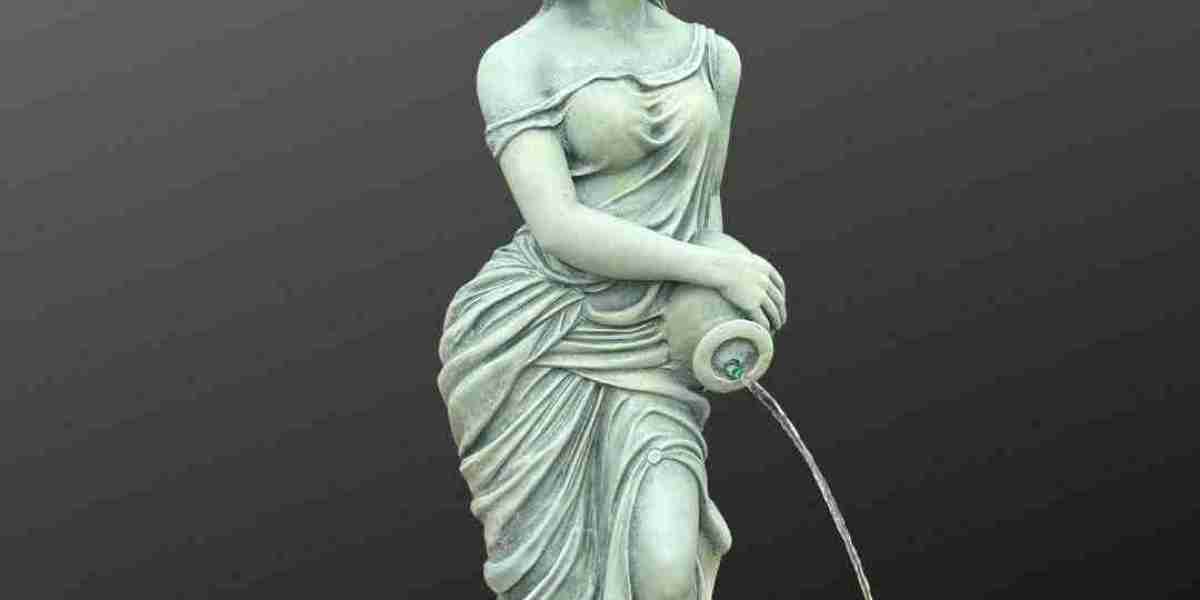Sacred spaces—from grand cathedrals and serene chapels to quiet cemeteries and meditation gardens—are designed not only to facilitate religious practices but also to evoke a profound sense of peace, awe, and spiritual reflection. Among the many elements that contribute to the atmosphere of these places, the angel statue holds a particularly powerful position. These ethereal figures, often depicted with wings, flowing robes, and serene expressions, do more than adorn altars or gardens—they resonate deeply with the human psyche and spirit.
In this blog post, we explore the psychological and emotional impact of angel statues in sacred spaces, examining how these timeless figures influence our mental states, elicit emotional responses, and reinforce spiritual experiences.
Angels as Universal Symbols
Across cultures and religions, angels symbolize protection, guidance, and the divine. Whether one follows Christianity, Islam, Judaism, or even spiritual but non-religious beliefs, the figure of an angel carries universal connotations of a higher power watching over humanity.
The presence of an angel statue in a sacred space instantly conjures these associations. It offers comfort to those in distress, hope to those in despair, and a sense of connection to the divine for those seeking spiritual affirmation. From a psychological standpoint, such symbolism acts as an anchor for the mind, offering a tangible representation of invisible forces believed to offer protection and support.
Emotional Comfort and Healing
One of the most significant emotional effects of an angel statue is the sense of comfort it can bring. In many sacred spaces, particularly cemeteries and memorial gardens, angel statues are placed as guardians over the departed. For grieving families, these figures provide a sense of peace and reassurance that their loved ones are being cared for by benevolent beings.
Grief is a complex emotional state, often characterized by sadness, confusion, and even anger. When faced with loss, people seek symbols that validate their pain while also offering hope. An angel statue, standing silently with open arms or gazing heavenward, creates a space where the living can process emotions in the presence of a gentle, watchful figure.
Psychologically, this visual cue can trigger the release of soothing neurotransmitters, such as oxytocin and dopamine, associated with feelings of trust, safety, and well-being. It’s not uncommon for individuals to report a sense of calm or emotional relief after sitting near or meditating upon an angel statue in a sacred environment.
Enhancing Spiritual Connection
Sacred spaces are designed to facilitate a connection with the transcendent. Whether through prayer, meditation, or silent contemplation, these spaces invite individuals to go inward and upward simultaneously. The angel statue enhances this process by acting as an intermediary figure between the earthly and the divine.
In Christian theology, angels are messengers of God, beings that bridge the gap between humanity and the celestial. For spiritual seekers, the presence of an angel statue in a chapel or shrine can serve as a visual focus point, guiding the mind toward higher states of awareness and contemplation.
Neurologically, visual stimuli play a crucial role in shaping mental and spiritual experiences. A beautifully crafted angel statue, with detailed wings and a serene expression, can stimulate the brain's right hemisphere—responsible for intuition, imagination, and spiritual insight. This activation facilitates deeper meditative states and enhances the overall spiritual ambiance of the sacred space.
Art, Aesthetics, and Emotional Resonance
Beyond symbolism, angel statues serve as artistic expressions that evoke emotional responses through their form, posture, and setting. The aesthetic quality of a statue—its craftsmanship, size, and placement—can deeply influence how it is perceived and what emotions it arouses.
For instance, a towering angel with outstretched wings and a triumphant pose may evoke feelings of power and protection. In contrast, a kneeling angel with a bowed head might stir emotions of humility, grief, or reverence.
From a psychological viewpoint, art that moves us—whether through beauty, grandeur, or poignancy—triggers emotional engagement and introspection. Angel statues, being both spiritual and artistic, create a multidimensional experience. They become not just symbols of faith, but also mirrors of our inner emotional landscape, reflecting our hopes, fears, and longing for transcendence.
Cultural and Collective Memory
The angel statue also functions within the realm of collective memory and cultural heritage. In many historic churches and cemeteries, these statues have stood for centuries, witnessing countless prayers, rituals, and personal transformations. Their continued presence ties individuals to a broader historical and communal narrative, reinforcing a sense of continuity and belonging.
This connection to history provides a form of psychological grounding. In an increasingly fragmented and fast-paced world, standing before an ancient angel statue can be a humbling reminder of the timelessness of human spirituality. It places the individual within a continuum, offering perspective and reducing existential anxiety.
Moreover, for those who may not adhere to a specific religious tradition, the angel statue still often resonates on a humanistic level. It represents ideals of goodness, selflessness, and divine care—qualities that transcend doctrinal boundaries and speak to shared human values.
Childlike Wonder and Innocence
Children and adults alike often respond to angel statues with a sense of wonder. Their often gentle and luminous forms evoke feelings associated with innocence, childhood, and purity. For many, encountering an angel statue brings back memories of childhood prayers or stories of guardian angels taught by parents or religious teachers.
This reawakening of childhood memories can have a comforting and even healing psychological effect. It reconnects individuals with simpler times, moments when faith was unquestioned and life felt safe. In therapeutic contexts, such symbols can aid in inner child work, a process through which individuals heal past emotional wounds by reconnecting with their younger selves.
Mindfulness and Presence
Sacred spaces encourage stillness, and the presence of an angel statue reinforces this invitation to pause. Whether standing in a garden or near an altar, these statues draw attention and encourage moments of mindfulness. Observing the details of an angel statue—the texture of the stone, the curve of the wings, the emotion captured in the face—can pull individuals into the present moment.
This focus on the “now” is beneficial for mental health. Mindfulness practices are known to reduce stress, enhance emotional regulation, and improve overall well-being. In this way, an angel statue serves not only as a spiritual symbol but also as a tool for psychological healing through mindful awareness.
Angel Statues in Modern Contexts
While often associated with traditional religious settings, angel statues are increasingly found in modern, non-denominational spaces. Hospitals, wellness centers, and even private homes incorporate angelic imagery to create calming and spiritually uplifting environments.
In these secular contexts, the angel statue continues to exert a powerful psychological effect. It symbolizes hope during illness, guidance in times of uncertainty, and emotional support during recovery or personal transformation. As people seek meaning beyond institutional religion, angel statues provide a flexible symbol that can be adapted to diverse spiritual or therapeutic frameworks.
Conclusion: The Quiet Power of an Angel Statue
Though silent and still, an angel statue speaks volumes. It tells stories of faith, love, loss, protection, and transcendence. In sacred spaces, these statues go beyond decoration; they become focal points for emotional release, spiritual connection, and psychological healing.
Their impact is subtle but profound—offering comfort to the grieving, inspiration to the seeker, and calm to the anxious. Whether in a cathedral’s dim light or a sun-dappled garden, the gentle presence of an angel statue reminds us of the invisible threads that connect the human soul to something greater than itself.




